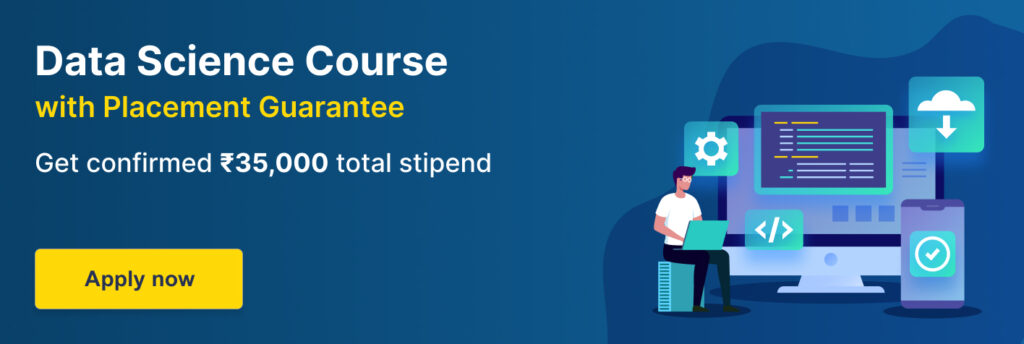Software Developer Roadmap: A Comprehensive Guide
A recent study revealed that software developers and related fields will witness a 25% growth. This highlights more demand for these professionals in the job market. If you want a career with great growth potential and a lucrative salary package, consider becoming a software developer. The blog explores various steps in the software developer roadmap to help you gain a comprehensive understanding of the domain.
Who is a Software Developer?
A software developer is a professional who designs, develops, and maintains computer programs or software for consumers and businesses. They work with clients to understand their requirements and convert them into functional code. Software developers work in teams to build efficient, scalable, and user-friendly software solutions.
Role and Responsibilities of a Software Developer
Software developers are involved in the entire software development lifecycle from ideation to the roll-out of the final software product. During this process, they undertake several duties to ensure the introduction of efficient programs and systems based on the user’s needs.
Here is a list of key responsibilities of a software developer for you to better comprehend their role:
- Writing software code scripts that are efficient and based on specifications.
- Integrating software components and third-party programs.
- Collaborating with developers to design algorithms.
- Debugging and testing existing software and implementing upgrades accordingly.
- Verifying and deploying programs.
- Collecting and analyzing user feedback and recommending improvements.
- Preparing technical documentation for reference and reporting.
Software Engineer Roadmap for Beginners
To pursue a career in any technical field, you require a comprehensive plan that provides information on the essential skills and knowledge necessary to perform well in the role. Enroll in a full stack development course with a placement offer to master the front-end and back-end processes of a software application.
Here is a software developer roadmap with a list of technical and soft skills you should learn to find success in this role:
Step 1: Master Basic Programming Languages
As a software developer, you will need to have an in-depth understanding of one or more programming languages. You should also learn about concepts such as object-oriented programming, data types, variables, conditional statements, operators, and more. Some of the popular programming languages that you can master are as follows:
- Python: It is a general-purpose programming language used to create various software programs. Python is preferred for software development because it helps create complex and multi-protocol software applications with concise and readable syntax. To learn this language, you can take up a Python course.
- C++: It is a programming language used widely in domains, such as system software, embedded systems, game development, and other high-performance applications. C++ is preferred because it provides a range of utilities and functions to ease the development process. Additionally, it provides low-level control over hardware, ensuring direct access to hardware resources for applications. To master this language, you can enroll in a C and C++ course.
- Java: It is a multi-platform, object-oriented, and network-centric programming language that is fast, secure, and reliable for coding everything from simple applications to enterprise software. You can pursue a core Java course to become proficient in this language.


Step 2: Learn Data Structures and Algorithms
Learning data structures and algorithms (DSA) is crucial to writing more scalable and maintainable code. It allows you to find efficient solutions to solve software problems. Data structures are used for storing and organizing data for computer systems to perform precise calculations. An algorithm is a series of well-defined and clear step-by-step instructions that guide a computer in performing particular tasks that solve specific problems. To learn more about DSA, you can enroll in a data structure and algorithms course.
Step 3: Gain an Understanding of Database Architecture
As a software developer, you should know how to create, maintain, and manage databases because software applications have to handle large amounts of data. Learn about relational (MySQL and Oracle) and non-relational databases (Apache Cassandra and MongoDB) to integrate them according to your software requirements.
Further, you need to learn how to perform database operations like create, read, update, and delete using SQL functions and queries. Structured query language or SQL is a popular query language used for querying and manipulating data in relational databases. To learn the language, you can pursue a short-term SQL course.
Step 4: Dive Deep into Frameworks and Libraries
Software frameworks offer developers pre-built components, tools, and libraries to accelerate the software development process. Using these frameworks greatly improves code quality and enhances the scalability of software applications.
Here are some of the popular frameworks used for developing software:
- .NET: This framework is developed by Microsoft for building a range of applications. It provides a consistent, object-oriented programming environment that reduces software deployment and versioning conflicts.
- Ruby on Rails: It is used to create high-speed software applications and supports the execution of complex structures of various cloud-based applications.
- Django: It is an open-source Python-based software development framework best suited for complex and database-driven apps. Additionally, you can read about Python libraries used in the development process.
Libraries used in software development are sets of pre-written functions, modules, and code. Developers use these to carry out tasks to solve typical issues that arise during the development process. Examples of libraries used in software development include the following:
- jQuery: It is a JavaScript library used for building the front end, specifically the user interfaces. It offers cross-browser compatibility and simple syntax. You can use it to quickly and efficiently create animations and effects.
- TensorFlow: It is a machine learning library created by Google. TensorFlow provides tools and resources to build and train ML models, especially deep learning models, for tasks like image recognition and natural language processing.
- React: It is a JavaScript library known for its features that facilitate the creation of software applications with component-based architecture. To learn more about this library, you can pursue a React JS course.
Step 5: Get Familiar With IDE
Familiarizing yourself with an integrated development environment (IDE) is an essential step in the software development roadmap. IDE is a software tool that provides comprehensive support for development tasks. Some of the popular IDE platforms are PyCharm, Visual Studio, and Eclipse. An integrated development environment offers the following benefits to developers:
- Provides features like code completion, templates, and syntax highlighting to write code accurately.
- Allows efficient organization of code files, resources, and dependencies through project management features.
- Integrates version control systems like Git to allow collaboration and management of code changes.
- Ensures seamless debugging with the help of built-in debuggers, inspection tools, and breakpoints within the IDE.


Step 6: Develop Proficiency in Testing and Debugging
Software testing and debugging are vital processes in the software development lifecycle. You should learn various techniques related to these processes to ensure your software program is error-free and provides an improved user experience. Using testing and debugging tools, you can isolate specific sections of the code contributing to an issue.
Further, you can test and validate fixes to ensure they resolve the issues without introducing new ones. Logging frameworks, integrated debuggers, and profiling tools are some of the debugging tools. Selenium, Appium, TestComplete, and Postman are some of the top software testing tools.
<H3>Step 7: Become Well-Versed With Version Control
Learning version control is extremely important for professionals like software developers and engineers because it allows them to quickly find and fix bugs, revisit old versions for reference, and collaborate on projects with other developers. This is why understanding version control systems is an essential step in the software engineer’s roadmap as well. Git and GitHub are two popular version control platforms that facilitate software development.
<H3>Step 8: Work on Your Soft Skills
A proficient and capable software developer is an asset to any organization because they possess the ability to transform ideas into functional software solutions, driving technological advancements. This role requires a combination of qualities that include both technical and soft skills.
Here is a list of essential soft skills:
- Good collaboration and interpersonal skills
- Strong communication skills
- Effective problem-solving skills
- Efficient time management skills
- Ability to learn, adapt, and grow
- Positive attitude and empathy
Step 9: Build a Strong Portfolio
A portfolio is a great way to showcase your skills and expertise to prospective employers and gain an edge in the competitive job market. You can work on projects to practice the skills you have acquired and develop them further. Some points to keep in mind while working on the portfolio are:
- Include both professional and personal projects. If you have collaborated on a project, add that as well, along with proper information.
- Do mention if any of your projects has won an award, contest, or recognition.
- Ensure that your portfolio is tailored to the job role. Select the order of the projects according to their relevancy.
- Showcase technical proficiency by adding source code and proper documentation to the projects.
- Add a brief bio at the beginning of the portfolio with contact information like an official email address or phone number.
- Specify links to your social media profiles where you actively post about your projects, industry knowledge, or other related information.
- Always link your resume to the portfolio, in case the hiring manager wants to know more about your education, experience, and more.
Step 10: Step into the Professional Realm With Internships/Entry-level Jobs
Once you have gained the relevant knowledge and developed skills, enter the workforce by applying for work opportunities. You can seek software developer internships to gain industry experience and apply your knowledge to real-life scenarios before you begin working as a full-fledged professional. Alternatively, you can apply for entry-level software developer jobs to directly enter the workforce.
Here are some tips to consider when applying for internship/job vacancies:
- Apply through our trusted job search portal.
- Network with industry professionals to gain information about new openings quickly.
- Set job alerts to receive instant notifications and not miss an application deadline.
- Customize and use professional formats for resumes and cover letters.
- Prepare for an interview well before the interview round.
- Reach out to the hiring manager after the interview through a follow-up email.
Conclusion
The software developer roadmap consists of steps to direct you on the path of becoming a professional in the tech industry. Navigate through each step carefully and understand the importance of learning the relevant skills that will help you perform well in the role. With consistent and thorough efforts, you can master skills and become a successful software developer. Are you looking to work in one of the top companies in this domain?
Check out Amazon software developer interview questions to get an idea of the hiring process and the answers the company is looking for in their ideal candidates.






